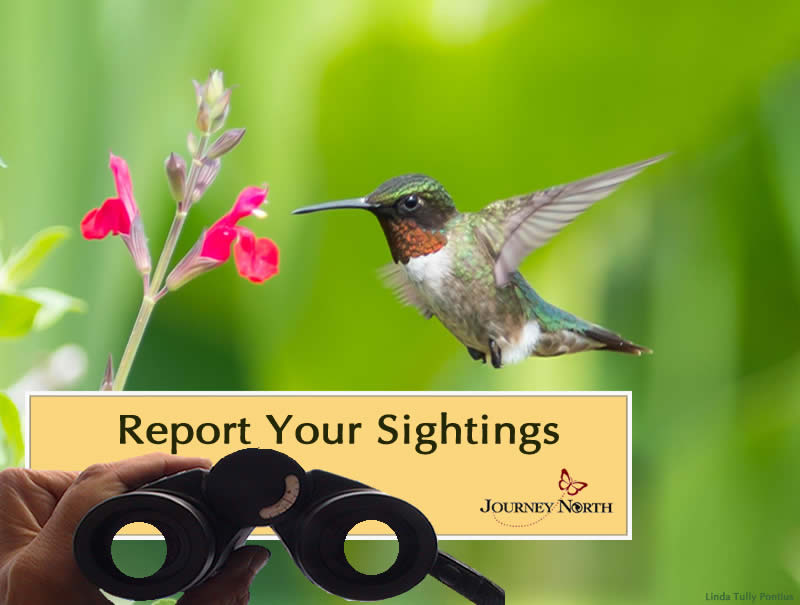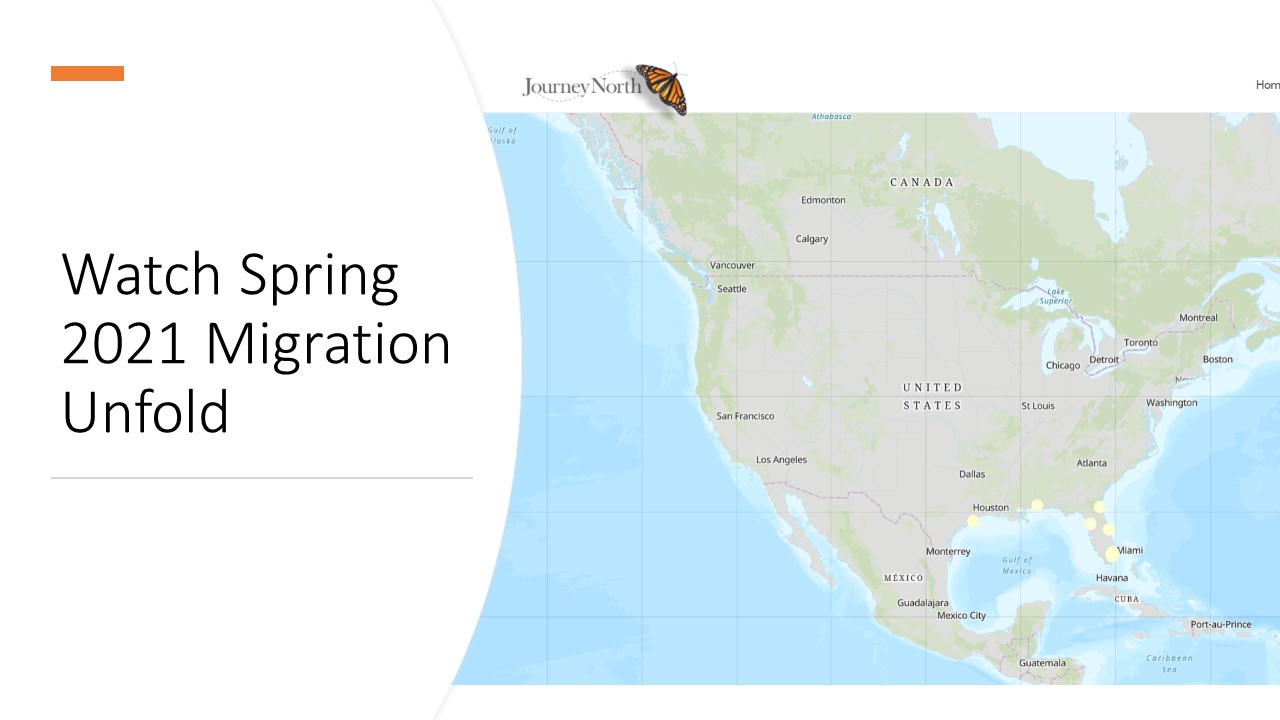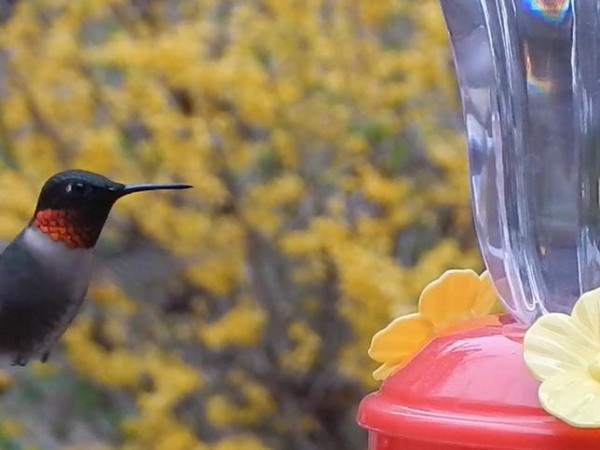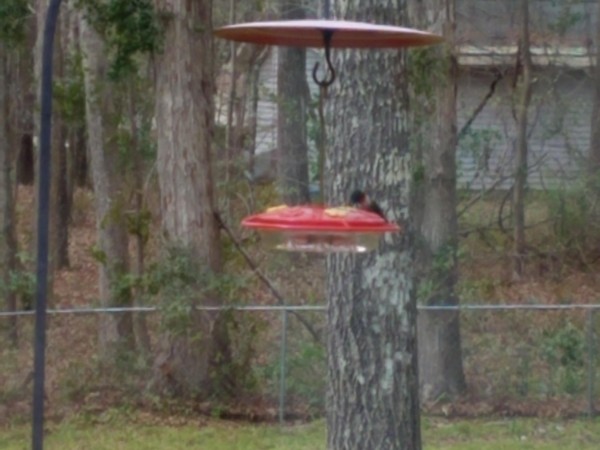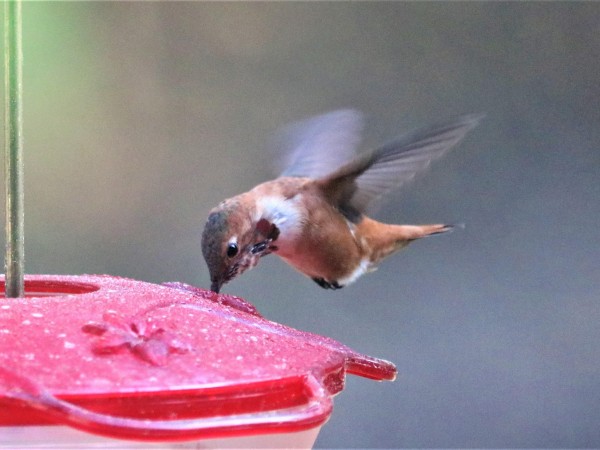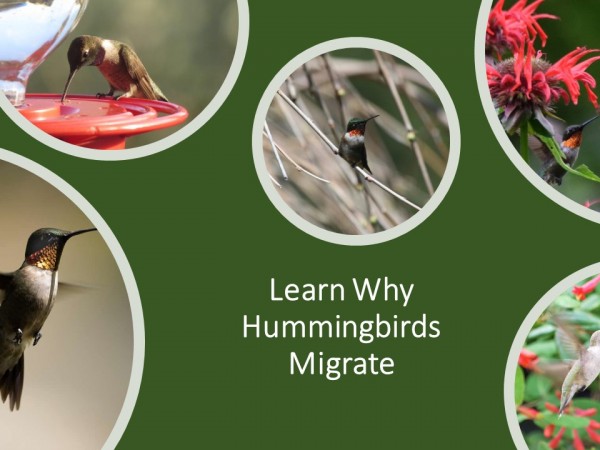Moving Northward
Ruby-throats Progressing North
The Ruby-throat migration frontline is slowly but surely moving north from the Gulf Coast. Most first observations of hummingbirds are males, although a few females are being reported. Male hummingbirds arrive first so they can find and defend a territory.
Patti in Karnack, TX: "There was a single, male Ruby-throated Hummingbird feeding from the feeder on the porch. There were several sightings throughout the day, always just one bird." (03/17/2021)
Joan in Vicksburg, MS: "First female Ruby-throated Hummingbird at feeder." (03/17/2021)
Fala in Ashland, AL: "We are pleased to report the first Ruby-throated Hummingbird sighting in our area. A mature adult male Ruby-throated Hummingbird visited our feeder on the evening of 3/18/2021."
Katie in Lagrange, GA: "First sighting here. I've seen him [Ruby-throated Hummingbird] at least 5 times since noon. There is possibly more than one visitor, but they're all males and I haven't seen any together." (03/23/2021)
Wide-ranging Rufous
Some Rufous Hummingbirds are already arriving to breeding territory as far north as British Columbia, Canada. Others have a long way to go with reports still coming in from Texas.
Tim in Nanaimo District, BC: "First male Rufous Hummingbird of the year arrived this evening. He immediately established his formidable presence, chasing away our multiple resident Anna's. Big journey, well done!" (03/18/2021)
Sue in Magnolia, TX: "Had two Rufous here through Winter Storm Uri - they left as soon as it warmed above freezing. This is the first sighting since then." (03/20/2021)
Other Species
Texas is a hotspot for Black-chinned Hummingbird migration. And in Arizona, competition between hummingbird species is heating up!
Mary in Killeen, TX: "First sighting of one male Black-chinned Hummingbird that visited my feeder this evening twice!" (03/21/2021)
Marjorie in Tucson, AZ: "Female Broad-billed Hummingbird attacking a female Anna's at "her" feeder. Ouch! That's gotta hurt! There are most often 8-10 around during the day. Anna's, Costa's and Broad-billed Hummingbirds." (03/17/2021)
Put Feeders Out
As migration picks up, make sure hummingbird feeders and potted nectar plants are out. These nectar sources provide crucial energy for migrating hummingbirds.
Steven in Pinehurst, TX: "The poor guy must've just flown in from Mexico. He sat on my feeder for more than a minute straight feeding. I've never seen one sit that long and not hover." (03/22/2021)
And depending on your location, start planting brightly-colored native flowers to provide pollinator habitat for hummingbirds and other species such as monarch butterflies.
Keep reporting your hummingbird observations to Journey North!
Report Observations and Include Photos
Keep reporting hummingbird observations to Journey North. If possible, include photos in your reports. Photos are always helpful; they aid in identification and shed light on behavior. However, hummingbirds are not always cooperative subjects. One potential workaround is to take a video and then extract a screenshot to use as a photo. Learn more in the tutorials below:
And please make sure your photo is properly rotated before submitting.


